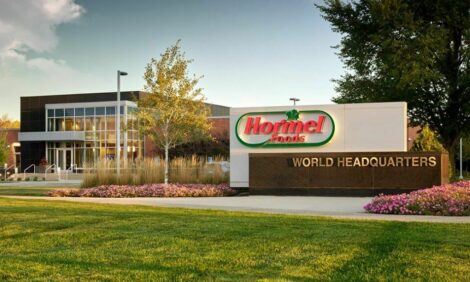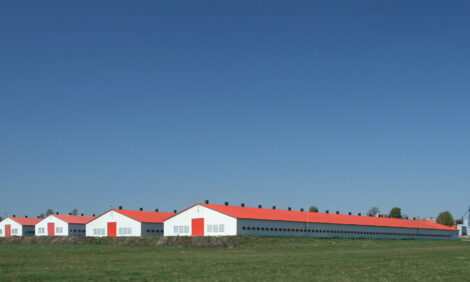



Dedicated Feed Line Boosts Flock Performance
Several years ago we came up with the idea of installing a dedicated feed line in the brood area to add extra feeder space and reduce hand filling, explained Georgia producer, Jacob Williams.
Dedicated chick line with Hi-Grow feeders.

Hi-Grow feeders installed on main feed lines between GrowerSELECT Classic Flood pans.
“Although we added additional feed drops and feeders between the pans on the main lines, we still didn’t meet our integrators requirement for enough extra feed spaces in the brood area. In the past, this meant we placed additional feeders or trays between the lines and had to fill them by hand,” continued Williams.

Eight broiler houses at Circle W Ranch near Everett Springs., GA.
Jacob along with his brothers, Adam, Michael and their families own Circle W Ranch, located near Everett Springs, GA. Circle W Ranch recently constructed eight 66’ x 600′ broiler houses each holding approximately 54,000 birds.

Black arrow highlighting dedicated feed line in the raised position.
The 290′ long feed line with 124 Hi-Grow feeders is located in the middle of the brood area. Constructed of plastic, the 10-pound capacity feeders reduce wastage compared to standard trays or paper. After providing the additional feeder space for ten days, the entire line is winched up out of the way along with the feeders.
“We have to gather up the Hi-Grow feeders under the main lines and store them when we are done brooding,” said Williams. “Being able to store the pans right on the feed line when we winch it up is another great feature.”
“Having the dedicated chick line fill automatically not only saves labor but frankly, just does a better job than we can do by hand,” noted Williams. “You know how it goes; you get busy, and feeders don’t get filled up right away, and you have empty hoppers. You just don’t see that happening with a dedicated line; that means we start with a more uniform flock and get better performance at close out.”









